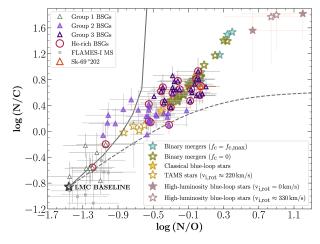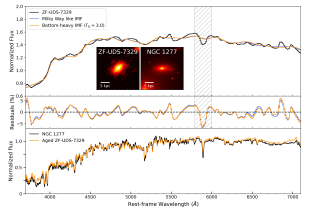The best spectrographs are limited in stability by their calibration light source. Laser frequency combs are the ideal calibrators for astronomical spectrographs. They emit a spectrum of lines that are equally spaced in frequency and that are as accurate and stable as the atomic clock relative to which the comb is stabilized. Absolute calibration provides the radial velocity of an astronomical object relative to the observer (on Earth). For the detection of Earth-mass exoplanets in Earth-like orbits around solar-type stars, or of cosmic acceleration, the observable is a tiny velocity change of less than 10 cm s-1, where the repeatability of the calibration – the variation in stability across observations – is important. Hitherto, only laboratory systems or spectrograph calibrations of limited performance have been demonstrated. Here we report the calibration of an astronomical spectrograph with a short-term Doppler shift repeatability of 2.5 cm s-1, and use it to monitor the star HD75289 and recompute the orbit of its planet. This repeatability should make it possible to detect Earth-like planets in the habitable zone of star or even to measure the cosmic acceleration directly.
Advertised on
References
It may interest you
-
 Massive stars, those over ten times heavier than our Sun, are the conduits of most elements of the periodic table and drive the morphological and chemical makeup of their host galaxies. Yet the origin of the most luminous and hottest stars among them, called 'blue supergiants', has been debated for many decades. Blue supergiants are strange stars. First, they are observed in large numbers, despite conventional stellar physics expecting them to live only briefly. Second, they are typically found alone, despite most massive stars being born with companions. Third, the majority of them harbourAdvertised on
Massive stars, those over ten times heavier than our Sun, are the conduits of most elements of the periodic table and drive the morphological and chemical makeup of their host galaxies. Yet the origin of the most luminous and hottest stars among them, called 'blue supergiants', has been debated for many decades. Blue supergiants are strange stars. First, they are observed in large numbers, despite conventional stellar physics expecting them to live only briefly. Second, they are typically found alone, despite most massive stars being born with companions. Third, the majority of them harbourAdvertised on -
 The formation and evolution of the disk of our Galaxy, the Milky Way, remains an enigma in astronomy. In particular, the relationship between the thick disk and the thin disk —two key components of the Milky Way— is still unclear. Understanding the chemical and dynamical properties of the stars within these disks is crucial, especially in the parameter spaces where their characteristics overlap, such the metallicity regime around [Fe/H] ~ -0.7, which marks the metal-poor end of the thin disk, higher than that of the thick disk. This is often interpreted as an indication that the thin diskAdvertised on
The formation and evolution of the disk of our Galaxy, the Milky Way, remains an enigma in astronomy. In particular, the relationship between the thick disk and the thin disk —two key components of the Milky Way— is still unclear. Understanding the chemical and dynamical properties of the stars within these disks is crucial, especially in the parameter spaces where their characteristics overlap, such the metallicity regime around [Fe/H] ~ -0.7, which marks the metal-poor end of the thin disk, higher than that of the thick disk. This is often interpreted as an indication that the thin diskAdvertised on -
 Observations made with the James Webb Space Telescope (JWST) have revealed a larger-than-expected number of massive galaxies when the Universe was still young. The focus of this study is precisely one of these galaxies, ZF-UDS-7329. It is a very compact object, and its spectrum suggests that it formed at a very early stage, when the Universe was around 2 billion years old. According to theoretical predictions, these objects first formed a generation of stars at the center of their dark matter halos and subsequently grew by merging with other halos. However, due to the random nature of theseAdvertised on
Observations made with the James Webb Space Telescope (JWST) have revealed a larger-than-expected number of massive galaxies when the Universe was still young. The focus of this study is precisely one of these galaxies, ZF-UDS-7329. It is a very compact object, and its spectrum suggests that it formed at a very early stage, when the Universe was around 2 billion years old. According to theoretical predictions, these objects first formed a generation of stars at the center of their dark matter halos and subsequently grew by merging with other halos. However, due to the random nature of theseAdvertised on
